
The Union-Castle Line was a British shipping line that operated a fleet of passenger liners and cargo ships between Europe and Africa from 1900 to 1977. It was formed from the merger of the Union Line and Castle Shipping Line.

USS Caesar (AC-16) was a collier that was built in England in 1896 and scrapped in Japan in 1935. She was launched as Kingtor for a British shipping company, served in the United States Navy as Caesar from 1898 to 1923, and then was sold to a Canadian shipping company who renamed her Mogul.

HMS Himalaya was built for the Peninsular and Oriental Steam Navigation Company as SS Himalaya, a 3,438 gross register ton iron steam screw passenger ship. She was purchased by the Royal Navy in 1854 for use as a troopship until 1894 and was then moored in the Hamoaze, Devonport to serve as a Navy coal hulk until 1920, when sold off. She was sunk during a German air attack on Portland Harbour in 1940.

SS Scharnhorst was a Norddeutscher Lloyd ocean liner, launched in 1934, completed in 1935 and made her maiden voyage on 8 May 1935. She was the first big passenger liner built by the Third Reich. Under the German merchant flag, she was the second liner named after General Gerhard J. D. von Scharnhorst. She was one of three ships on the Far Eastern route between Bremen and Yokohama; her sister ships were Potsdam and Gneisenau. These three ships were planned to shorten the journey time between Bremen and Shanghai from the usual 50 days to 34. She was trapped in Japan in September 1939 and later converted into an Imperial Japanese Navy aircraft carrier named Shin'yō in 1942 and sunk by the US submarine USS Spadefish in 1944.
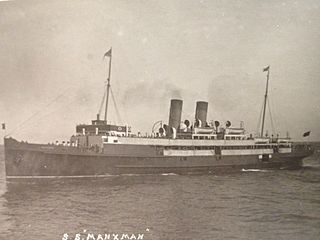
TSS Manxman was a turbine steamship launched in 1904 for the Midland Railway and operated between Heysham and Douglas, Isle of Man. In 1916, she was commissioned by the Royal Navy as HMS Manxman and saw action as a seaplane carrier during the First World War, after which she was acquired by the Isle of Man Steam Packet Company. On the outbreak of the Second World War she was again requisitioned as a troop ship, until she was commissioned and her name changed to HMS Caduceus. She never returned to Manx waters, and was scrapped in August 1949.

RMS Empress of Scotland, originally SS Kaiserin Auguste Victoria, was an ocean liner built in 1905–1906 by Vulcan AG shipyard in Stettin for the Hamburg America Line. The ship regularly sailed between Hamburg and New York City until the outbreak of war in Europe in 1914. At the end of hostilities, re-flagged as USS Kaiserin Auguste Victoria, she transported American troops from Europe to the United States. For a brief time Cunard sailed the re-flagged ship between Liverpool and New York.

HMS Melita was a Royal Navy Mariner-class composite screw sloop of 8 guns, launched in 1888 and commissioned in 1892. She was the only significant Royal Navy warship ever to be built in Malta Dockyard, She was renamed HMS Ringdove in 1915 as a salvage vessel and in 1920 was sold to the Falmouth Docks Company, which changed her name to Ringdove's Aid. She was sold again in 1926 to the Liverpool & Glasgow Salvage Association, renamed Restorer, and finally broken up in 1937, 54 years after her keel was laid.
Brittany was a 631 GRT passenger ferry built in 1910 for the London, Brighton and South Coast Railway. In 1912 she was sold to the London and South Western Railway, passing to the Southern Railway on 1 January 1923. She was renamed Aldershot in 1933. In 1937 she was sold to an Italian owner and renamed Hercules. On 24 November 1941, she was torpedoed and sunk by HMS Triumph.

The Great Western Railway's ships operated in connection with the company's trains to provide services to Ireland, the Channel Islands and France. Powers were granted by Act of Parliament for the Great Western Railway (GWR) to operate ships in 1871. The following year the company took over the ships operated by Ford and Jackson on the route between Wales and Ireland. Services were operated between Weymouth, the Channel Islands and France on the former Weymouth and Channel Islands Steam Packet Company routes. Smaller GWR vessels were also used as tenders at Plymouth and on ferry routes on the River Severn and River Dart. The railway also operated tugs and other craft at their docks in Wales and South West England.
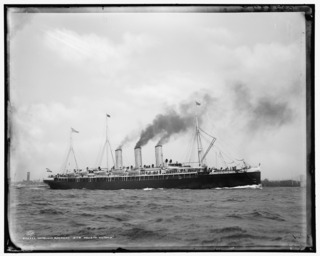
Augusta Victoria, later Auguste Victoria, placed in service in 1889 and named for Empress Augusta Victoria, wife of German Emperor Wilhelm II, was the name ship of the Augusta Victoria series and the first of a new generation of luxury Hamburg America Line ocean liners. She was the first liner built in continental Europe with twin propellers and when first placed in service, the fastest liner in the Atlantic trade. In 1897, the ship was rebuilt and lengthened and in 1904 she was sold to the Imperial Russian Navy, which renamed her Kuban.
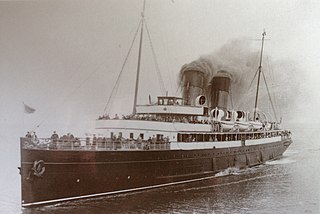
SS Snaefell (IV), the fourth ship in the company's history to be so named, was a packet steamer originally owned and operated by G. and J. Burns, who sold her to the Isle of Man Steam Packet Company in 1920.
SS Melmore was a passenger cargo vessel operated by the Great Western Railway from 1905 to 1912.
PS Brocklesby was a passenger and cargo vessel built for the Great Central Railway in 1912.
PS Duchess of Kent was a passenger vessel built for the London and South Western Railway and London, Brighton and South Coast Railway in 1897.

SS Frederica was a passenger ferry that was built in Scotland in 1890 for the London and South Western Railway. In 1912 she was sold to Ottoman owners who renamed her Nilufer. In 1914 the Ottoman Navy used her as a minelayer. A mine sank her in November 1914.
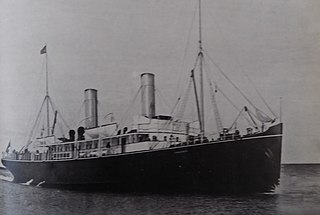
SS Columbia was a passenger vessel built for the London and South Western Railway in 1894.

TSS Alberta was a passenger vessel built for the London and South Western Railway in 1900.
TSS Hantonia was a passenger vessel built for the London and South Western Railway in 1911.
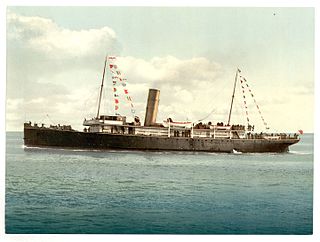
SS Vera was a passenger vessel built for the London and South Western Railway in 1898.
Rahmi Kaptan was a ship that was built in 1873 as Honfleur by Aitken & Mansel, Glasgow for the London and South Western Railway. She was sold to Greece in 1911 and renamed Chrysallis then Chrysalis. She was sold to the French Navy in 1917 and served as the patrol vessel Fauvette, later Fauvette I. In 1924, she was sold to Turkey and renamed Ihsanie. She operated for a number of Turkish owners under the names Aidin, Aydin, Cihat, Demirhisar and Rahmi Kaptan, serving until c.2005.














